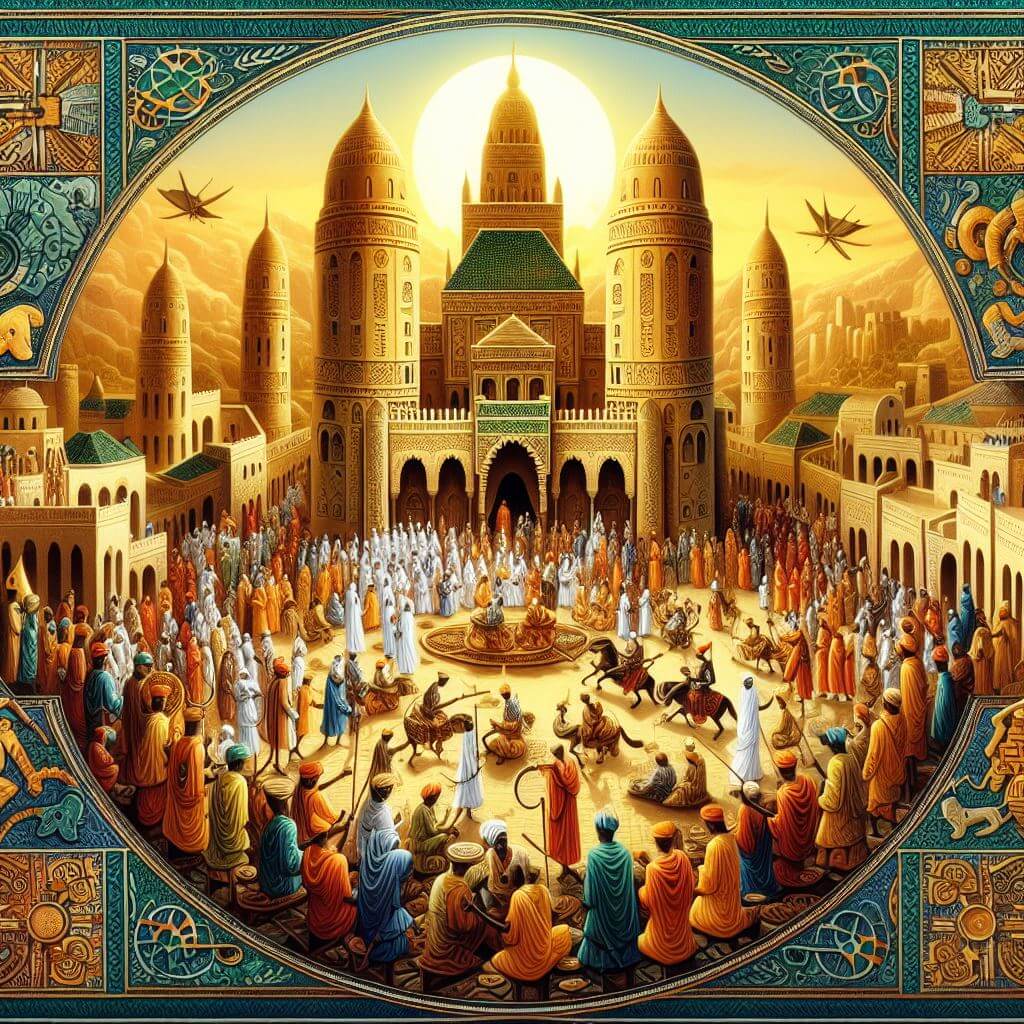Explore the rich history of the Mali Empire, from its origins in the 13th century to the pinnacle of prosperity under Mansa Musa. Discover the economic and cultural impact on West Africa, the flourishing trade routes, and the factors leading to Mali’s eventual decline in the 15th century.

Mali Empire; a rich and powerful West African state of the 13th to 15th centuries, created by the Mandingo (Mandinka), a people of the upper Niger Valley. The name Mali means “where the mansa (master, or king) resides” and therefore signifîes a royal capital and the country ruled from it. Mandingo and Mandinka mean “people of Mali.”
Early History
As the ancient kingdom of Ghana decayed after its defeat by the Almoravids of North Africa about 1076, many groups competed for its political and economic heritage. Ghana, whose territory corresponded to the western part of the present republic of Mali, had been the principal entrepot for the profîtable exchange of gold and slaves from the western Sudan in return for Saharan salt and North African products. Around 1235 victory went to the Keita, a southern Mandingo elan that had trading interests extending eastward along the Niger.
The Keita had an outstanding general, Sundiata, who established a powerful new monarehy incorporating ancient Ghana and its tributary states. This kingdom, Mali, extended its territory by conquering other Sudanic peoples, especially to the east down the Niger. The Niger provided essential communications for Mali and its trade, leading to the cities of Timbuktu and Gao, from which ran the shortest caravan routes to North Africa.
Gao, conquered by 1300, was also important as the capital of the Songhai, a river-dwelling people who controlled navigation on the Niger from Djenne eastward to the borders of Hausaland. In the 14th century, Mandingo merehants penetrated Hausaland, and Djenne became a base for the development of new trade routes southeast to the gold resources of Lobi and Ashanti.

Mali at Its Height
Mali reached its peak of prosperity and power under Mansa Musa (reigned 1312-1337) and Mansa Sulayman (reigned 1340-1360). Arabic writers depicted a well-ruled empire that extended 1,500 miles (2,400 km) from the Atlantic Ocean eastward to Hausaland, and from the edge of the forest northward into the Sahara. The ruling merehant and urban elasses were Muslini. Mansa Musa’s pilgrimage to Mecca in 1324-1325 was notable for its lavish display of wealth. Timbuktu and other cities were centcrs of Islamic seholarship and culture.
Mali commanded a wide network of trade and tribute throughout the western Sudan and dominated trade with North Africa. its wealth was used to enforce law and order throughout the empire to the further enhancement of urban and commercial life. Mali’s merehants were widely influential beyond its borders, promoting the economic growth of the Hausa cities and Islamizing their kings and merehants. Mali also influencea the political and economic development of Ashanti and the Gold Coast.

Mali’s Decline
In the 15th century, competition for wealth and power among Mali’s ruling factions sapped its military strength, which was needed to retain control of the subject peoples. The regaining of independence by the Songhai in the middle of the 15th century ended Mali’s ascendancy. A remnant kingdom survived in the upper Niger Valley, but the eastern empire became the basis for a new and more extensive Songhai dominion.
mavi